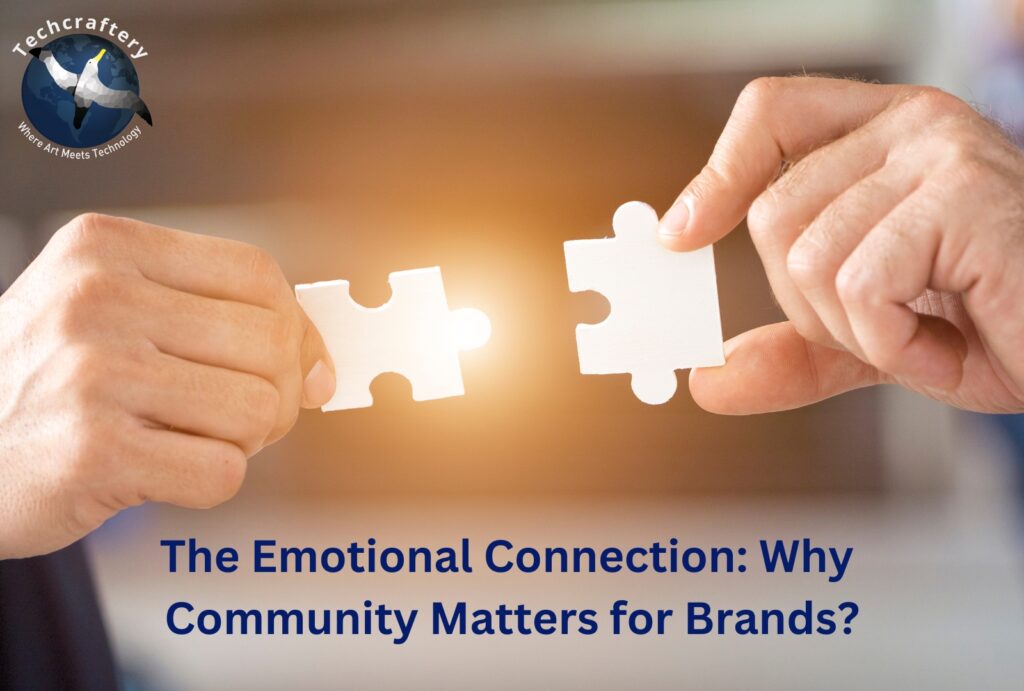The Emotional Connection: Why Community Matters for Brands

In today’s fast-paced digital world, brands face an ever-growing challenge: standing out in a crowded marketplace. The key to this challenge lies not just in the products or services offered but in the emotional connections that brands can forge with their audience. Building a strong community around a brand can create a lasting impact, driving loyalty and fostering engagement. In this article, we’ll explore why community matters for brands and how emotional connections play a vital role in this process.
Understanding Community
At its core, a community is a group of individuals who share common interests, values, or goals. In the context of brands, a community can be made up of customers, employees, partners, and advocates who feel a sense of belonging to the brand. This sense of belonging often translates into trust and loyalty, two crucial elements that can significantly influence consumer behavior.
The Role of Emotional Connection
Emotional connections are formed when individuals feel understood, valued, and appreciated. When brands tap into these emotions, they can create a deeper relationship with their audience. Here are a few reasons why emotional connections matter:
- Trust Building: Trust is foundational in any relationship. When consumers feel emotionally connected to a brand, they are more likely to trust it. This trust often leads to repeat purchases and brand advocacy.
- Loyalty: Emotional connections foster loyalty. When customers feel a bond with a brand, they are less likely to switch to competitors, even if they offer similar products or services.
- Word-of-Mouth Marketing: Emotionally engaged customers are more likely to share their positive experiences with others. This organic word-of-mouth marketing is invaluable for brands.
- Feedback and Improvement: A strong community provides a platform for feedback. When brands listen to their community, they can improve their products and services, showing that they care about their customers’ opinions.
Building an Emotional Connection
Creating an emotional connection requires a strategic approach. Here are some effective ways brands can foster this connection:
1. Authentic Storytelling
Storytelling is a powerful tool for brands. When a brand shares its story—its values, mission, and journey—it creates a narrative that resonates with consumers. This authenticity allows customers to relate to the brand on a personal level.
- Example: TOMS Shoes is known for its “One for One” model, where every purchase leads to a pair of shoes being donated to someone in need. This story not only highlights their business model but also connects emotionally with customers who value social responsibility.
2. Engaging Content
Content plays a vital role in building community. Brands can create blogs, videos, and social media posts that encourage engagement. Content that educates, entertains, or inspires fosters connection.
- Example: Nike uses motivational content that not only promotes its products but also encourages individuals to pursue their dreams and push their limits. This type of content resonates with consumers emotionally, fostering a sense of community.
3. Active Engagement
Communicating with your audience is essential. Brands should actively engage with their community through social media, forums, and events. This interaction shows that the brand values its customers’ opinions and experiences.
- Example: Starbucks often engages with customers on social media, responding to feedback and sharing user-generated content. This engagement helps create a sense of belonging among customers.
4. Creating Shared Experiences
Brands can foster a sense of community by creating shared experiences. Events, both online and offline, can bring customers together. These experiences can range from workshops to social gatherings.
- Example: Sephora hosts in-store beauty classes where customers can learn new skills and meet others with similar interests. This not only enhances customer loyalty but also strengthens the community around the brand.
5. Building a Loyalty Program
Loyalty programs can help strengthen emotional connections. When customers feel rewarded for their loyalty, they are more likely to engage with the brand.
- Example: Starbucks’ rewards program encourages customers to return by offering exclusive benefits and personalized experiences. This strategy deepens the emotional bond with the brand.
The Impact of Community on Brand Success
The benefits of building a community around a brand are numerous. Here are some key impacts that a strong community can have on brand success:
1. Increased Customer Retention
Building a community fosters loyalty and encourages customers to return. When customers feel a sense of belonging, they are less likely to switch to competitors.
2. Enhanced Brand Reputation
A strong community can enhance a brand’s reputation. Positive word-of-mouth and customer testimonials can significantly influence potential customers. When people see others praising a brand, they are more likely to trust it.
3. Better Customer Insights
A community provides valuable insights into customer preferences and behaviors. By engaging with the community, brands can gather feedback that helps refine their products and services.
4. Increased Revenue
Loyal customers are often repeat buyers. A strong emotional connection can lead to increased sales and revenue. Furthermore, customers who feel connected to a brand are likely to spend more.
5. Greater Resilience
Brands with strong communities are more resilient in times of crisis. Loyal customers are more likely to stand by the brand, providing support during challenging times.
Case Studies of Successful Brands
Several brands exemplify the power of community in building emotional connections. Here are a few notable examples:
1. Apple
Apple has cultivated a strong community of loyal customers who feel a deep emotional connection to the brand. Through its innovative products and unique marketing strategies, Apple has created a sense of belonging among its users. The Apple Store experience, with its knowledgeable staff and community events, further enhances this connection.
2. Lego
Lego has built a vibrant community around its products. The brand encourages creativity and collaboration through user-generated content, contests, and events. By allowing fans to share their creations, Lego fosters a sense of pride and connection among its customers.
3. Harley-Davidson
Harley-Davidson is another prime example of a brand that has successfully built a community. The brand’s focus on lifestyle and brotherhood has created a strong emotional bond among its riders. Events like bike rallies and owner gatherings help reinforce this connection.
4. Patagonia
Patagonia stands out for its commitment to environmental sustainability. The brand’s mission-driven approach resonates with customers who share similar values. By engaging its community in environmental causes, Patagonia fosters a sense of purpose and connection.










